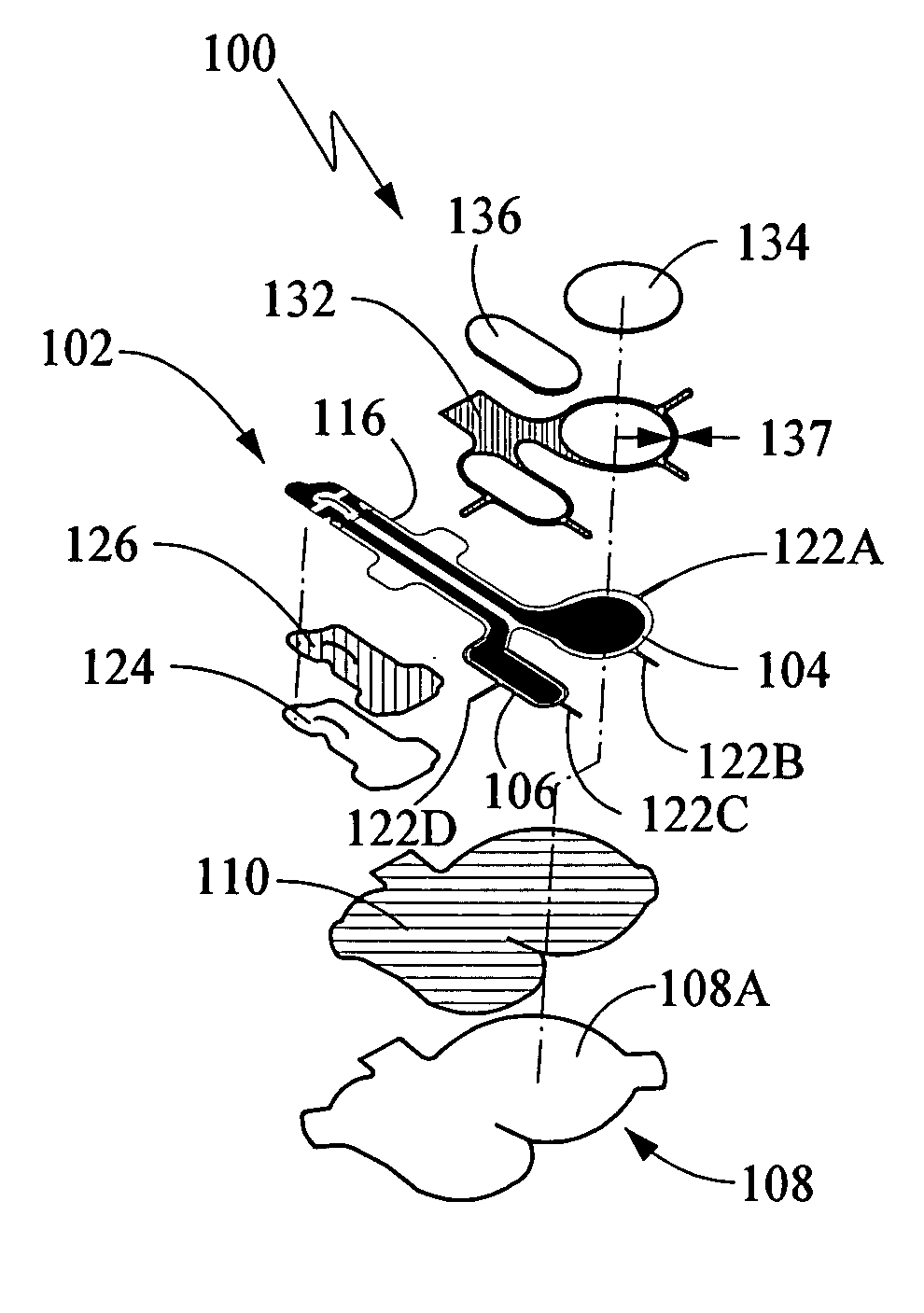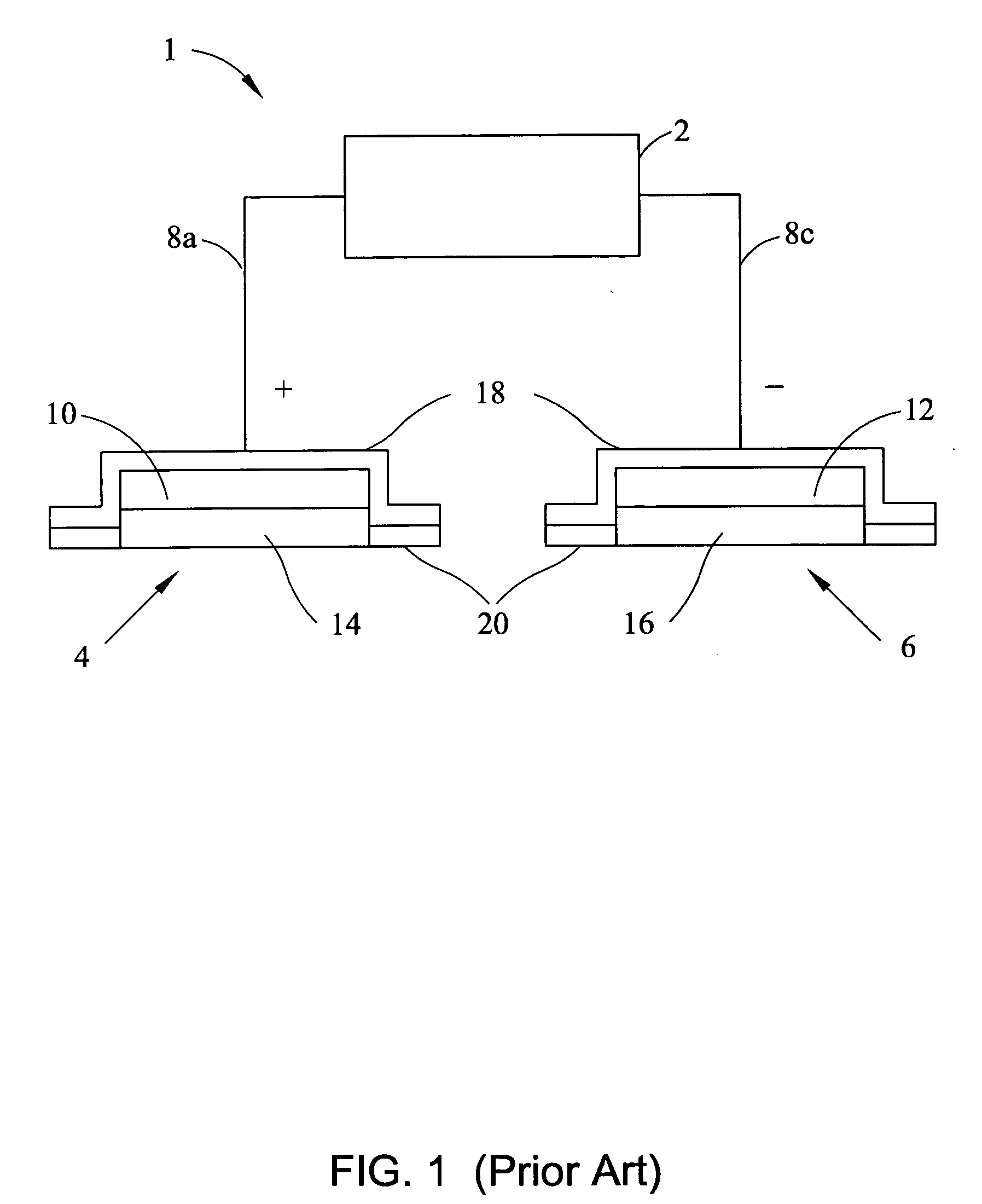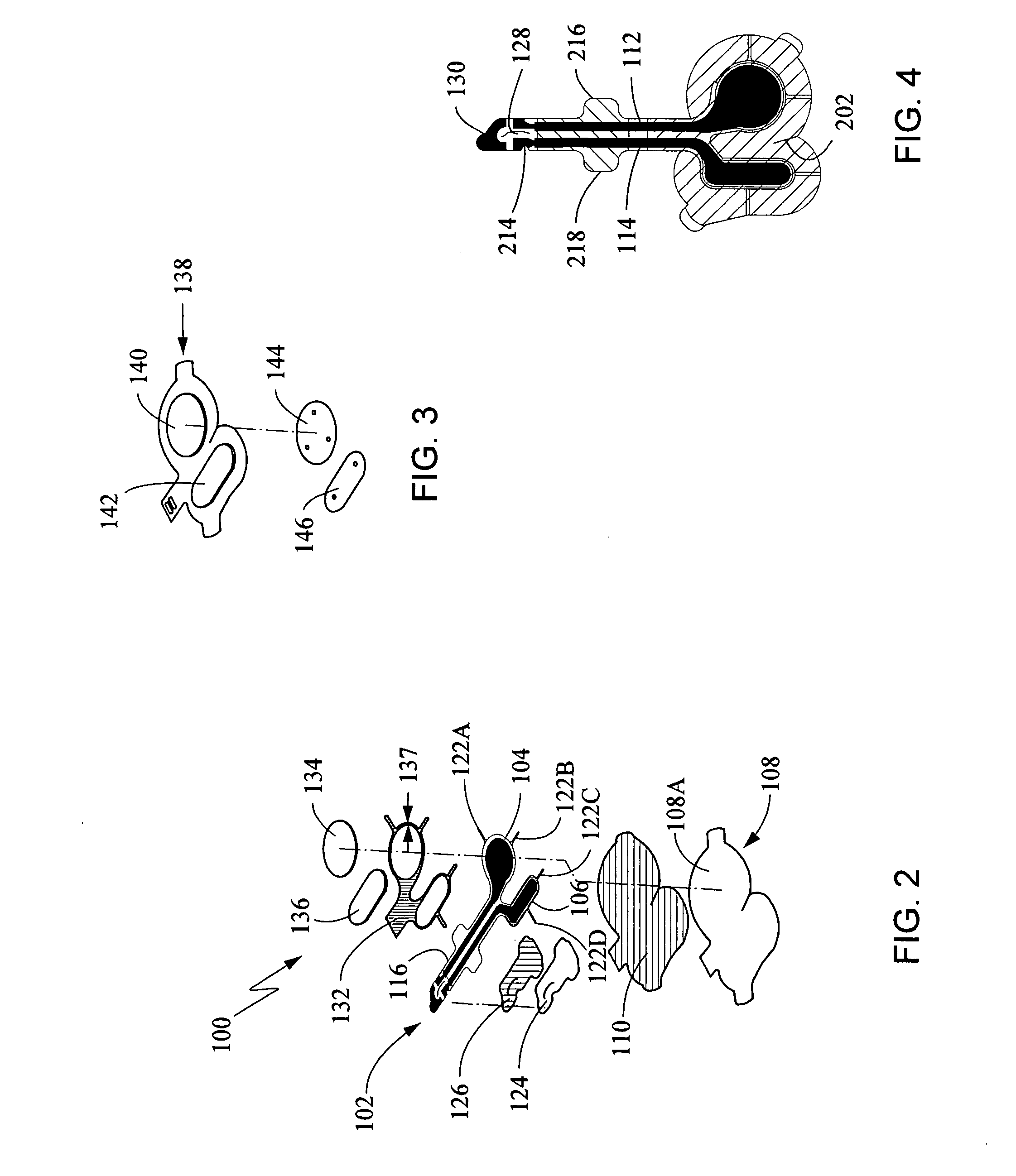Electrically assisted lidocaine and epinephrine delivery device having extended shelf-stability
a technology of electric assisted lidocaine and epinephrine, which is applied in the direction of inorganic non-active ingredients, drug compositions, and treatment, etc., can solve the problems of multi-component reservoir-electrode, difficult to store drug to be delivered, and not widely used, so as to reduce the return of the device from the customer, and the confidence in the produ
- Summary
- Abstract
- Description
- Claims
- Application Information
AI Technical Summary
Benefits of technology
Problems solved by technology
Method used
Image
Examples
example 1
Preparation of Electrode Assembly
[0109] The following components were assembled to prepare an electrode assembly, essentially as shown in the figures discussed above, for delivery of lidocaine and epinephrine by iontophoresis.
[0110] Backing: ethylene vinyl acetate (EVA) (4.0 mil±0.4 mil) coated with polyisobutylene (PIB) adhesive (6 mg / cm2), (Adhesive Research of Glen Rock, Pa.). The backing was dimensioned to yield a gap of between 0.370 inches and 0.375 inches±0.005 inches between the gel electrode and the outer edge of the backing at any given point on the edge of the gel. Excluding the tactile feedback notch and the wings, the tab end of the electrode had a width of 0.450 inches to 0.500 inches±0.005 inches.
[0111] Tab stiffener: 7 mil PET / acrylic adhesive (Scapa Tapes of Windsor Conn.).
[0112] Printed electrode: Ag / AgCl electrode printed on du Pont 200 J102 2 mil clear printable PET film with dielectric coated Ag / AgCl traces. The Ag / AgCl ink was prepared from du Pont Ag / AgCl ...
example 2
Preparation of Hydrogel Electrode Reservoirs—Droplet Loading
[0125] In another embodiment, unloaded gel reservoirs within an integrated patch assembly were prepared as follows to the specifications shown in Table E:
TABLE EIngredient% Wt.PVP24.0Phenonip antimicrobial (phenoxy ethanol and parabens)1.0NaCl0.06Purified waterQS
[0126] The gels were crosslinked by electron beam irradiation at an irradiation dose of about 2.7 Mrad (27 kGy) at an electron beam voltage of 1 MeV.
[0127] The unloaded anode gel reservoirs were placed on Ag / AgCl anodes and 0.32 ml aliquots of Loading Solution A (Table A) were placed on the reservoirs and were permitted to absorb and diffuse into the reservoir.
example 3
[0128] The following examples provide a complete description of the three stability lots (lots 1, 2 and 3) of 5,000 patches prepared according to Example 1, with stability data from samples at four storage conditions, as indicated in TABLE F:
TABLE FReported Stability Time / Storage ConditionsTimeStorage Conditions24months 5° C.24months25° C. / 60% RH (relative humidity)12months30° C. / 60% RH6months40° C. / 75% RH
[0129] The following represents 24 month data at 5° C., 24 month data at 25° C. / 60% RH, 12 month data at 30° C. / 60% RH and six months stability data at 40° C. / 75% RH on lots 1, 2, and 3. Stability test methods and specifications are described below. PVP gel reservoirs were prepared according to Example 1.
Test Methods and Specifications
[0130] The stability specifications and analytical test methods are provided as follows:
Test Method A
HPLC Method Lidocaine Hydrochloride
[0131] Lidocaine hydrochloride, which is contained in the anode drug (dispensing) solutio...
PUM
| Property | Measurement | Unit |
|---|---|---|
| volume | aaaaa | aaaaa |
| thick | aaaaa | aaaaa |
| mass ratio | aaaaa | aaaaa |
Abstract
Description
Claims
Application Information
 Login to View More
Login to View More - R&D
- Intellectual Property
- Life Sciences
- Materials
- Tech Scout
- Unparalleled Data Quality
- Higher Quality Content
- 60% Fewer Hallucinations
Browse by: Latest US Patents, China's latest patents, Technical Efficacy Thesaurus, Application Domain, Technology Topic, Popular Technical Reports.
© 2025 PatSnap. All rights reserved.Legal|Privacy policy|Modern Slavery Act Transparency Statement|Sitemap|About US| Contact US: help@patsnap.com



